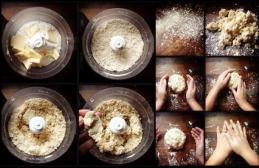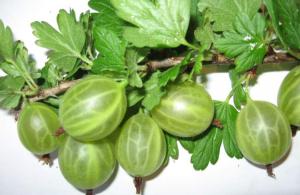The method of frame house construction in our country became widespread in the middle of the last century. Then it was better known as frame-panel or frame-slit. On its basis, it was possible to quickly and inexpensively create acceptable living conditions for large groups of people. Such advantages of frame houses made it possible, for example, to quickly build entire workers’ settlements in harsh Siberian conditions for the families of those who came to explore this cold region.
Frame yesterday and today
Nevertheless, frame buildings, adapted to Soviet realities, have earned the reputation of short-lived, sometimes windswept housing. This happened for a number of reasons, in particular, due to some simplifications when copying, as well as the use of low-grade building materials. Therefore, at one time, frame houses could not seriously compete with traditional Russian log houses or more solid brick (stone) structures.
A new round of development of the Western method of construction has been observed in our country for the last 25 years. Taking into account the mistakes of predecessors, using higher quality and new high-tech materials, contemporaries are building houses that freely compete in many respects with stone or solid wood. But still, since nothing is ideal in the world, when choosing a project it is necessary to take into account the pros and cons of frame houses. Let's look at the most typical of them.
Advantages of frame houses that you should know about
Universality of technology
Modern frame construction in Russia can hardly be called canonical. Of course, it has general principles for the construction of multilayer frame-frame or frame-panel structures, prescribed in a number of regulatory documents. For example, in the widely used SP 31-105-2002 “Design and construction of energy-efficient single-family residential buildings with a wooden frame.” However, in practice, frame technology turned out to be so universal that it made it possible to work with a wide range of materials, to create buildings with shapes - from simple to the most unusual, endowed with versatile functionality.
Thus, frames are made from solid or laminated coniferous wood, as well as from metal profiles of various configurations. Polystyrene foam, polyurethane foam, ecowool, mineral wool, sawdust, etc. are used as thermal insulation fillers. Even greater variability is observed when choosing facing materials. Almost all known sheet construction products can be used to cover the panels (taking into account the location of their external or external installation): OSB, DSP, chipboard, plywood, plasterboard, glass magnesite, slate, profiled metal, siding, etc. In addition, the outside of a frame house can be lined with brick or stone. In this case, the external sheet cladding of the frame is not always necessary (installing a wind barrier film is sufficient). Sheet covering can also be replaced with lining both outside and inside the building.
Pre-fabricated and all-season construction
These are some of the most significant advantages of frame houses. Largely thanks to them, frame structures have long been recognized in the West and have already appealed to a wide range of domestic developers. For example, the box of a medium-sized one-story private residential building can be assembled on a pre-prepared foundation in just a day! Of course, we are talking about one mounted from factory-assembled panels. But even if the walls and ceilings are completely manufactured on the construction site, the speed of their construction is still quite high. Thus, the construction of an average turnkey frame house from the zero cycle to the start of operation takes time, in the case of assembly:
- from ready-made factory panels – 2-3 months;
- from materials on the construction site - 4-5 months.
At the same time, the installation of enclosing structures can be carried out year-round, since there are no “wet” processes. The only exception is monolithic foundations, but they can often be replaced with screw piles.

Competitive cost
When weighing the pros and cons of turnkey frame housing construction, we should not forget about the attractive price tags for such structures. If we compare them with “classic” brick buildings, the difference in prices will be two or even three times not in favor of the latter. At the same time, it is important to measure the full volume of investments, since there is wide scope for manipulation with the figures characterizing unfinished buildings. For example, it won’t be too expensive to install a bare brick box. However, in order to bring it to modern standards of thermal efficiency, the masonry will have to be insulated, which will also be a considerable expense. On the contrary, the advantage of a frame house is that its enclosing structures initially combine load-bearing and heat-insulating functions.
The same applies to finishing - it is often enough to putty smooth frame walls to prepare, for example, for painting. In turn, even high-quality brickwork (which is no longer cheap) needs an additional starting layer of plaster.
Important! The relatively low labor intensity of constructing frame housing also has a positive effect on its market value. It is much easier to build than houses made of stone.
Application of lightweight foundations
A noticeable saving in the total estimated cost of the structure falls on the foundation. Indeed, due to the low mass of the building, material-intensive foundations are not required for its installation. For example, the most popular frame houses with a skeleton made of 50*150 mm boards are characterized by a specific weight of wall panels of 30-50 kg/m2. For comparison, brickwork reduced to a thickness of 150 mm is 200-250 kg/m2. If we take into account that in reality, external brick walls are rarely less than 380 mm or 510 mm, then the difference in the masses of brick and frame houses is already huge. And this is not even taking into account the excellent loads from heavy hollow-core reinforced concrete floors in brick and wooden beams in a frame structure.
Based on the low requirements for the bearing capacity of the foundation, frames can be installed on any of the known types of foundations. The variability of choice can only be limited by very problematic soils. In all other cases, the type of foundation is selected based on the characteristics of a particular building, local conditions or availability of materials. For example, a one-story frame house can be installed on block posts, screw piles or reinforced concrete strips with a width of only 250 mm.

Disadvantages of frame houses that can be avoided
Like a permanent structure of any type, a frame structure requires compliance with construction technology. However, in his case, the manifestation of crookedness, negligence or unjustified savings can play an overly pronounced negative role. Thanks to the efforts of some “professional” teams or dubious fly-by-night productions, those disadvantages of a frame house appear that theoretically should not exist. This, perhaps, is the main drawback of frame construction - many of its aesthetic and operational properties are too dependent on compliance with installation rules and the quality of the source materials. If everything is done without violations, then the house, even without major repairs, will stand freely for decades, delighting its residents with a high level of comfort and coziness.
With this in mind, the disadvantages of a frame house should be considered in terms of the problems encountered and ways to eliminate or prevent them.
Weak stability and strength of load-bearing structures
Opponents of construction using frame technology will certainly remember the sights of some country or cottage villages in the form of rickety houses, like those shown in the figure below.

However, the problem is not at all in the initial fragility of the structure, but in the fact that it requires careful preliminary calculation or at least an understanding (based on practical experience) of the specifics of the operation of the spatial frame, the loads applied to it and the distribution of loads, the properties of materials and key elements. Reliable facilities are built according to designs developed by engineers using computer modeling tools. Strength deficiencies of a frame house can also be eliminated if it is built according to a standard design by qualified installers. Typically, teams of such people have a significant track record with positive reviews that they have accumulated over the years. Having been engaged in the construction of frame structures for more than one day, practitioners, among other things, must have a clear understanding of regional wind and snow loads and work with trusted suppliers of high-quality building materials.
Insufficient or gradually decreasing thermal efficiency of building envelopes
One of the problems due to which in past years interest in frame-panel houses was somewhat lost. Unfortunately, it still happens today. The reasons are as follows:
- the thickness of the wall or floor panels, and therefore the insulation in them, does not meet local climatic conditions. For example, a 100 mm layer of effective thermal insulation (mineral wool, expanded polystyrene) can be considered as a sufficient thermal barrier only in the walls of a garden house, and even then, located in a temperate climate zone;
- poorly fitted or loosely tightened building elements, insufficiently sealed joints of frame parts, windproof fabrics or sheathing sheets - these technological violations cause through blows. Similar disadvantages of frame houses can also manifest themselves as a result of intense shrinkage of the building or its deformation, as a consequence of the use of lumber with natural moisture. Shrinkage of wood leads to the opening of joints in structures;
- Violation of the integrity of the vapor barrier, incorrect choice of materials for it or its incorrect installation contribute to the rapid dampening of the insulation. Wet thermal insulation not only ceases to fulfill the tasks assigned to it, but also becomes a source of putrefactive processes that destroy load-bearing elements;
- subsidence (sliding) of the insulating filler of wall panels, due to which an area with reduced energy efficiency is formed in their upper part. This usually occurs if low density mineral wool is selected but sufficient measures are not taken to fix it;
- Damage to the thermal insulation of a frame house by rodents sometimes becomes a really serious problem. To prevent this from occurring, you should try to make it difficult for pests to penetrate inside the panels or discourage them from doing so. For this purpose, for example, ventilated facades are protected from below with metal gratings or meshes. If the cladding is “wet”, then a good solution would be to install a Knauf Aquapanel or a DSP board plastered over a steel mesh. In addition, various chemical impregnations and ultrasonic devices are used to repel rodents. A couple of cats on the property will also help significantly reduce the risk of damage to insulation by mice or rats.

High fire hazard
This disadvantage of frame houses is quite relative. However, in any case, it is no more significant than that of traditional solid wood structures. After all, even if the building envelopes are assembled on a wooden frame with foam core, the outside can be sheathed with sheets of plasterboard or glass-magnesite slabs. This lining reliably blocks open flames from accessing combustible materials. In addition, building codes require that combustible materials be initially flame retardant, either in the factory or on site.
Important! If a frame is installed from a metal profile with a mineral wool filler, then its fire resistance can already be commensurate with a stone structure.
Fire safety issues also affect electrical installations. The PUE regulates the laying of electrical wiring on combustible structures in an open manner or hidden in metal pipes or sleeves.
Fragility
It hardly makes sense to say that a frame house, unlike a stone one, will last for centuries. However, as mentioned above, you can count on decades. A building that has received timely care and preventive maintenance of its structures may well serve its children and grandchildren. At the same time, simpler and cheaper repairs, compared to massive structures made of stone or wood, can also be considered an advantage of a frame house.
The key factor in the durability of the frame is the hydrophobization and antiseptic treatment of the structural materials of its walls and ceilings in parts located no higher than 250 mm from the ground. For internal wood elements, processing is carried out at the stage of construction, as well as during repairs when opening the panel cladding. Preparation of beams, racks, crossbars, lintels, etc. on construction sites it is carried out by painting or dipping them in containers with a working solution. Today, complex-action compounds that are simultaneously water repellents, fire retardants and antiseptics are often used as such solutions. Parts of the frame located above 250 mm from the ground do not require mandatory treatment with antiseptics (SP 31-105-2002).

It will be possible to fully use the advantages of a frame house for many years if you avoid getting moisture in any form inside the panels. For example, water can seep through a damaged roof deck, rise through the capillaries of the foundation through a broken shut-off waterproofing, or migrate with steam flows from the room through poorly taped vapor barrier joints. If this happens, you should remove the sheathing, remove the insulating filler and thoroughly dry the frame. Thermal insulation material is dried separately, but sometimes it is better to renew it altogether.
Before reassembling the panels, the frame elements must undergo mandatory protective and preventive treatment:
- parts that have undergone biological damage or corrosion are cleaned, and if they are significantly damaged, they are replaced;
- Wood parts are impregnated with complex compounds, steel parts are treated with anticorrosive agents, then galvanized or painted.
Soundproofing problems
Although this disadvantage of a frame house is cited, often when comparing it with a brick building, you should clearly understand what we are talking about. Of course, a thick brick mass, identical in thermal conductivity to a frame wall, better insulates from street noise. However, its intensity in places where frame frames are predominantly located is not so high. After all, they are usually built not in urban centers, but in cottage villages, the private sector or rural areas.
The problem of internal noise remains. And in this matter, again, everything depends on compliance with installation rules and the materials used. For example, to avoid listening to conversations of people on another floor:
- floor coverings are installed on the ceilings using the “floating floors” system;
- filling of ceilings or partitions should be carried out only with fibrous materials with special acoustic parameters;
- Air cavities in ceilings, walls, and partitions are not allowed;
- interfacing of structures is carried out through elements of acoustic decoupling in the form of elastic gaskets or layers made of latex, cork, porous rubber, etc.

Urgent need for ventilation
The ideal frame house is a thermos with zero heat loss. In practice, by selecting the appropriate building materials and performing high-quality assembly from them, you can come very close to the theoretically possible minimum of heat loss through the building envelope. However, in any case, there will remain one more problem area in the thermal circuit of the building, through which significant amounts of energy will be lost. We are talking about the ventilation system. After all, you can still do without it in a log house or brick building, where the walls are directly involved in steam, gas and heat exchange in the premises. But in a frame structure, where under the inner lining there is a continuous vapor-proof carpet over a layer of insulation, there is no way without ventilation.
And no matter how sorry it may be in winter to blow precious calories out into the street along with air currents, if you do not ensure the required level of gas exchange, then serious problems cannot be avoided. In addition to other negativity caused by the lack of fresh air, accumulating dampness will gradually find a loophole in the vapor barrier. Steam, migrating through the insulation from the room to the street, will cool in the outer layers of the enclosing structures, falling into condensation. The result is a decrease in the effectiveness of thermal insulation, rotting (rusting) of the frame, and the development of harmful mold microflora.
Therefore, the urgent need for ventilation can be considered both a plus and a minus of a frame house. After all, on the one hand, it will no longer be possible to ignore this important issue, which means that there will always be a healthy atmosphere in the premises. On the other hand, you will have to choose one of two options:
- Increase energy consumption to compensate for heat loss due to ventilation. This is a rather dubious method, since the high thermal efficiency of enclosing structures is practically negated.
- Install a comprehensive climate system, complete with air heating, recovery and air conditioning units. Despite the fact that such devices cost a lot, they gradually pay for themselves and begin to save energy resources. As a last resort, you can at least install a recuperator on the supply and exhaust ventilation system.

conclusions
Taking into account the opinions of experts regarding the pros and cons of frame houses, as well as positive and negative reviews from numerous users of these structures, we can draw general conclusions that:
- frame housing, with strict adherence to the technology of its construction and subsequent careful treatment, can provide its owners with many years of comfortable use;
- is quite affordable due to its low cost;
- Having a number of advantages and disadvantages, it cannot be considered as an absolute replacement for other popular types of buildings, but only as a worthy alternative to them.
What are the disadvantages of frame houses, the possibility of dampness and fungus. Noise insulation, vibration, complexity of finishing. How great is the reliability and durability?
Despite the advantages of wooden buildings, there are also disadvantages of frame houses. Are frame houses really flammable? How great is the risk of fungus and dampness in the house? How reliable is the soundproofing of the room? Does vibration have a significant effect on the structure? What is the difficulty of interior decoration?
What are the typical disadvantages of frame structures? How long is the durability and reliability of the frame? Why frame structures do not inspire confidence. What are the main disadvantages and weaknesses of frame houses.
Easy flammability of frame houses
No matter how many thousands of years humanity has existed, it has been building homes for itself for the same amount of time. From caves and primitive dugouts, people gradually came to build more advanced houses made of stone and wood, depending on the availability of one or another material. Construction processes, technologies and materials have improved, life has become more comfortable, but to this day, any technology and materials have their drawbacks. This is expressed in durability, availability of materials, cost of construction, time spent on it.
Traditional stone and wood houses are durable, but require a lot of time, materials and money. A revolution in house building occurred in the middle of the last century, when the technology for constructing frame houses was developed in North America. American and European developers immediately identified the pros and cons of frame houses, so the technology has been developed in many countries, and in recent years in Russia.
When discussing the pros and cons of frame houses, it is worth remembering that a house built from any material, while having undeniable advantages, will certainly have disadvantages. This may be due to design features, properties of wall and other materials and operational parameters. Considering the low cost of houses built using frame technology, some disadvantages have to be put up with, while others need to be discussed and, if possible, the consequences of them minimized. The main disadvantages of frame houses lie in the peculiarities of their designs and materials, and such disadvantages include:
Expert opinion
Filimonov Evgeniy
Ask a question to an expertA fire in any house brings great destruction and destruction of structures, but if at least the walls remain of a brick house, the frame house burns out completely.
But can flammability stop the process of building frame houses? It won't stop. Construction has been going on for decades, and manufacturers of protective equipment are constantly producing more and more reliable fire retardants - fireproofing impregnations. These impregnations prevent the wood from igniting when it comes into contact with an open flame.
In addition, it is easier to prevent a fire than to extinguish it, and for this there are a large number of electronic fire protection systems that monitor emergency situations around the clock. Control of the internal electrical network and other communications is of great importance. Compliance with fire safety rules makes the advantages of frame houses more significant than this disadvantage.
High incidence of dampness and fungus
In areas with high levels of precipitation and high humidity, dampness may appear in any building. In a frame house, the risk is somewhat greater, since a very accurate calculation of the “dew point” is required, the boundary between the different temperature backgrounds of the street and the house.
If this point is calculated incorrectly, condensation occurs, followed by fungus and mold, but this can only happen when the premises are completely sealed, when the walls do not “breathe” and moisture does not escape outside. When building the walls of frame houses, a correctly assembled “sandwich” and the treatment of wooden structures with an antiseptic that protects against fungus and pests are of great importance. A properly built and carefully treated house with antiseptics will not be afraid of fungus, mold and pests for many years.
Low noise insulation
A big disadvantage of frame houses is the low noise insulation between individual rooms and interfloor ceilings.
Expert opinion
Filimonov Evgeniy
Professional builder. 20 years of experience
Ask a question to an expertThe lack of thick walls and slabs on the ceiling affects this, but the noise level can be reduced by laying a thicker layer of insulation in the walls and installing decorative soundproofing materials, of which quite a lot are produced today.
But all these measures will not help in the fight against noise and vibration when walking in shoes on the second floor and moving furniture. Make as little noise as possible.
Vibration resistance
Due to their design features, frame houses are sensitive to vibration, which leads to a loss of rigidity in the connection of parts and structural elements, and the house gradually goes to destruction.
Difficulty in interior finishing
Disadvantages include problems with driving nails for certain needs, but this is a problem for all houses whose walls are lined with gypsum plasterboard. It can be solved, since manufacturers offer different types of wall fasteners, so you can always hang a family portrait.
Have you decided to build a house using frame technology? Familiarize yourself with the disadvantages of frame houses before you begin construction.
Managers of construction companies sing arias about the advantages of frame and frame-panel houses. They are inexpensive and highly environmentally friendly, and your grandchildren will inherit them. Well, just a fairytale house. Is this really true, or are we being told another fairy tale?
Frame houses or frame-panel houses are known to everyone who has seen old Soviet dachas. Thanks to these dachas, the technology was popularly called “frame-slit”, and we traced the disadvantages of frame houses to the advent of Finnish, Norwegian and Canadian technologies that are so actively advertised now.
Controversial merits
Advertising of frame houses appeals to economy, environmental friendliness, and speed of construction. Let us consider in detail what building a house using frame technology entails and what obvious disadvantages have already appeared during operation.
Noise level– most of these houses have a very low level of sound insulation. Being on the second floor, you will hear a conversation or a working TV on the first floor without making any effort. The fact is that having adopted foreign technology, we did not adopt their pedantry - incorrect placement of ventilation ducts or installation of partitions in violation of technology - and you live in “noise hell”.
Humidity– wood, especially poorly processed wood, tends to absorb and retain moisture. With poor ventilation and treatment of building beams, fungus appears, and this is a direct threat to health.
Ignition– in frame houses the risk of fire is much higher. Basically, all due to the same violations of building codes: for example, improper insulation of the roof structure and chimneys. Materials add their contribution - 90% is wood impregnated with flammable agents and adhesives.
Thermos effect– frame houses do not “breathe”; there is poor air exchange in them. It is cold in such houses in winter and hot in summer. In general, this is an exaggeration due to the fact that most people confuse the plastic panels from which shops are built and the panels used to build frame-panel houses.
Fragility– in comparison with brick and stone houses, frame houses made of light panels are very short-lived. Manufacturers guarantee us an operational life of up to 100 years, but the reality of domestic construction is such that no one believes the guaranteed terms.
Instability– frame houses are very sensitive to vibration – the operation of a washing machine can set the entire house in motion. Instability leads to loss of rigidity of the entire structure.
Low quality- the general quality of materials provided on the market, their improper storage, lack of necessary skills and experience among builders give rise to a low-quality product - a low-quality house, unsuitable for habitation.
Everything is bad?
Despite the above-mentioned disadvantages and shortcomings, the construction of frame houses is slowly, creakingly developing and looking for its market. With all the nuances, this is the best option for a young family to acquire their own home. Most of the negative aspects arise due to the unprofessionalism of builders, disregard for the process and basic ignorance. If everything were so bad and impractical, this technology would have been abandoned long ago in both Europe and the USA, but they have been building this way for centuries.
We do not urge you to abandon this construction technology. We recommend that you familiarize yourself with all the disadvantages of a frame house to avoid disappointment in the future.
No matter what anyone says, there are no ideal technologies in the world, including construction ones. Each has its own positive and negative sides. In addition, when choosing one or another method of housing construction, it is important not to forget about healthy, and not so healthy, competition, about fair, and not entirely fair, methods of fighting for the consumer.
Anyone who tries to consider our bias in this article, please take into account the fact that we do not sell any materials, do not offer construction services, and do not sit on kickbacks from construction mafiosi. We only help you make up your mind and offer arguments for a more informed choice.
Disadvantages of frame houses
First of all, it must be said that a frame house has disadvantages, and there are many of them. And in order to figure out which ones specifically, how to minimize or eliminate them, we must separate real threats from clearly far-fetched ones. Or those that are not disadvantages exclusively of this type of housing construction.
First of all, about the mythologized shortcomings of frame houses:
1. Flammability. Try on the Internet to find comparative characteristics of the flammability of frame and brick houses, or just ask how long it takes for a brick house to burn out. We failed, but the claims that a frame house burns down in seconds are a quarter of Google. However, statistics do not record such patterns. Moreover, when constructing frame structures, developers pay increased attention to fire safety (wood processing, electrical wiring, etc.) than with traditional types of construction. At the same time, timber houses or houses made of rounded logs almost fall out of the fire hazardous zone. But both insulation and most finishing materials for frames are much more resistant to combustion than pure wood, even if it has been processed accordingly. And the last thing on this issue: after a fire in a brick house, it loses up to 80% of its original properties (walls, ceilings, roof), it is impossible to live in it. Calculate the cost of disposal.
2. Dormitory for rodents. Over the course of several years, we specifically conducted a survey of residents of frame houses about the presence of rodents in their homes. It turned out that for them this problem is no more acute than for residents of brick, block and other houses. In short, these animals don’t live in their walls, they have nothing to do there, but they get into the house through open doors and windows; in one house they gnawed through a window slope. The fight against them is the same as with everyone else: poison, ultrasound, mousetraps, special glue, etc.
3. Fragility. The assertion is clearly unfounded. Some existing frame houses are more than 500 years old. Another thing is that those construction technologies are not currently being fully used. But in reality, whether they are needed, you are unlikely to get a positive answer. Not many drivers of modern cars would want to drive their century-old predecessors all the time. Taking a ride is one thing, but driving constantly is doubtful. And the level of daily maintenance, and ease of management, etc. Same with houses. If today in many, even quite budget houses, heating and cooling are monitored by smart appliances and a person may not think about the need to interfere with their work for years, then getting him to give up this and switch to heating with wood or coal is not an easy task. And is it necessary? Therefore, the optimal lifespan of a house being built now can be considered 30-60 years. New technologies that have replaced the current ones will most likely not give him this period of time. At home they are already printing on a printer.
4. Fragility. It depends on which type of frame you choose, what section of wood you install in it, and how you fasten it. In countries where this technology is more widespread than in Russia, multi-apartment and individual frame houses of 4–5 floors are easily erected. We are allowed 2 with an attic. Obviously, an allowance is made for the dishonesty of some of our builders, and not for technology. But we hope you don’t consider yourself one of those people? And for those still in doubt, let us inform you that a serious increase in the percentage in favor of frame houses in relation to the rest of individual houses in Japan occurred after the Kyoto earthquake of 1995, with a magnitude of 7.3 points. And after the 9-point Fukushima, it will probably grow even more.
5. Not environmentally friendly. One of the most unfounded myths about frame housing construction. If you do not use non-ecological materials when building your frame, it will never become non-ecological! I hope this statement will not be questioned? Absolutely environmentally friendly materials definitely do not exist. Drywall - one of the cleanest materials - is covered with paper. What is the glue based on? Wouldn't a tree grown on radiation-contaminated soil raise your suspicions from an environmental point of view? All crushed stone is radioactive by nature, clay often contains harmful impurities, and at cement factories they give milk for being harmful! And what? Have we stopped using these materials in construction?
The minimization of these unfounded myths, the real disadvantages of frame housing construction and some ways to eliminate them will be discussed in the next section.
How to minimize or eliminate the harmful effects of frame house materials on its inhabitants?
Yes, a number of specific materials commonly used in frame construction pose some threats to our health. Let's look at them and determine methods to combat them:
OSB is an oriented strand board in which wood chips are pressed under high pressure using an adhesive binder. There are slabs that use glue that does not contain harmful substances, but they are expensive and practically do not enter the territory of the Russian Federation, so we will deal with those that exist. Phenol-formaldehyde glue is capable of releasing phenol into the atmosphere at temperatures above 32°C. When using OSB, be careful not to allow this temperature to reach the surface. Cover them from the inside with plasterboard, install aluminized screens on thick polyethylene foam behind the heating radiators, or abandon this type of heating altogether. Make a ventilated facade on the outside, or better yet, cover it with a layer of expanded polystyrene, at the same time you will break the temperature connection between the wooden frame elements and the environment. And if none of what is proposed suits you, cover the surface of the OSB with a special varnish or mastic that you select on the Internet. By the way, our furniture made of chipboard, linoleum and laminate contains much more of this nastiness, as well as the possibility of harming our health, but we do not refuse them because of this.

Insulation materials. No one denies the presence of a phenol-formaldehyde binder in the same cotton wool, and styrene in expanded polystyrene. But the conditions under which they begin to have at least some negative impact on our health are difficult to achieve in practice. And certainly, these are the most closed materials in the pie of walls and ceilings of our house. And not so much from the impact on us, but from the impact of the environment on them, which, as a rule, is more than enough for our quiet existence in their environment.
The rest is even simpler:
Be sure to treat the wood with everything required: fire-fighting impregnations and antibacterial ones. Moreover, even in the event of (pah-pah) a fire, your wooden floor beams will resist the spread of fire even better than a reinforced concrete floor slab that quickly lost its physical parameters and burst;
For all materials, be sure to require all available permits and certificates (SES, Ministry of Emergency Situations...). This applies to absolutely all materials, incl. polyurethane foams and ecowool, even the tree has logging tickets, from which you can see where and when it was cut down. Well, sometimes our licensing standards are more serious than those in other countries. They won't let any outright nasty stuff through for sure.

And for God’s sake, don’t buy in gateways - and you’ll live in an environmentally friendly house.
The fight against real, but easily removable disadvantages of frame houses
One of the most serious, but not difficult and inexpensively removable problems of any wooden house, and not just a frame one, is its not very good sound insulation. Through wood, as through communication wires, excellent sound transmission occurs. Contact sound is transmitted especially well: knocking on the wall, steps on the floor and ceiling. This effect can only be prevented by violating the integrity of the structure. And if we cannot separate the frame itself without losing its main feature - rigidity, then we must break this sound transmission during interior decoration, isolating it from the frame.
1. In walls with PSB-S insulation, this is easy to do. Use lumber for the frame that has been dried after cutting. In this case, a timber cut to size 150x50 will have a size of 145x48 after drying, and the foam glued between the beams will have a thickness of 150mm. If at the same time we place the inner sheet covering the insulation not rigidly, without pressing it with self-tapping screws to the frame, but glue it with the same mounting foam to both the polystyrene and the studs, we will get such sound insulation on the walls that medieval castles will envy.
2. When installing cotton insulation, this method will not work. In this case, we recommend sticking or stapler strips of polyethylene foam onto the frame posts and fastening the inner lining sheets without special tightening of the screws. This will not disrupt the solidity of the frame if it was assembled using technology, and you will radically reduce sound transmission.
3. The same methods will be effective when installing floors. But it is also important to leave a gap between the finishing floor covering and the walls. It can be masked with a baseboard, laid with any insulation or sealed with silicone sealant. The use of a slab floating foundation is one of the radical ways to eliminate sound transmission through the floor.
Another, unavoidable, according to some skeptics, problem is the need for expensive, noisy, and at the same time either ineffective or worsening the heat conservation of the house ventilation. Yes, the ventilation system is traditional for other houses, but in this house it’s like a saddle for a cow. This is true. Without going into too much detail, which would require another half of the volume of such an article, we recommend the following:
1. Study the feasibility of using infrared film heating for your home, instead of the usual, but in our opinion, ineffective systems in a modern home. Such heating, in addition to being economical, eliminates most of the issues related to the need to ventilate a frame house in the autumn-winter-spring, and in the summer you will rather have to close the windows from the sun's rays than worry about ventilation.
2. Use compact, quiet, built-in heat exchangers that allow you to ventilate the room most effectively, preserving precious heat as much as possible.
As we warned at the beginning of the article, most of the disadvantages of a frame house are myths that you can debunk yourself if you build your own frame house, of course, with strict adherence to technology. And the biggest myth is that it is either impossible or extremely difficult to do this with your own hands, and this requires the greatest builders of our time, all of whom, without exception, are assembled at the firm “So-and-so” and nowhere else.
Dear readers, if you have any questions, please ask them using the form below. We will be glad to communicate with you;)
The popularity of frame houses is growing every day. Someone owns such a building on a suburban plot, and there are also those citizens who have built a home in the city and live in it year-round. Like any construction technology, frame construction technology has its supporters and opponents. The former believe that such houses are the future, while the latter view them as a temporary phenomenon with no prospects. It is worth focusing on what the pros and cons of a classic frame house are in order to understand whether it is worth taking a closer look at such a home on occasion.
Advantages of frame houses
Residential buildings using this technology are not something new in the world. Frame houses can be found in the USA, Canada, as well as in a number of European countries. In some cities they are represented in overwhelming numbers. They are built in regions with a warm climate, as well as in fairly harsh weather conditions, which are characterized by high negative temperatures. Frame houses owe their prevalence and popularity to the following advantages:

In addition to everything, it is necessary to say about the aesthetic appearance of the buildings. A frame house will attract the attention of others. It will also look advantageous against the background of nearby objects, but made of brick, foam concrete or cinder block. Exterior finishing can include siding, panels, or other materials. Communications can be laid inside the walls. For example, plumbing or electrical cables. Access to taps and junction boxes is provided through special hatches.
Disadvantages of frame houses
The advantages were mentioned above. Now is the time to find out what disadvantages are inherent in frame houses. Looking ahead, it should be noted that they are not as critical as they might seem at first glance. So, the negative sides are as follows:

Is it worth building a frame house for personal residence?
It is likely that someone is thinking about building a country house or a house within the city and is looking at frame construction technology. It must be said that if the object is built as expected, it will last at least 60-80 years.

The houses are easy to repair. If something happens, faulty elements can be easily replaced with new ones. Comfortable housing will cost relatively inexpensively, and the level of comfort from living is no worse than in a house built of brick.









